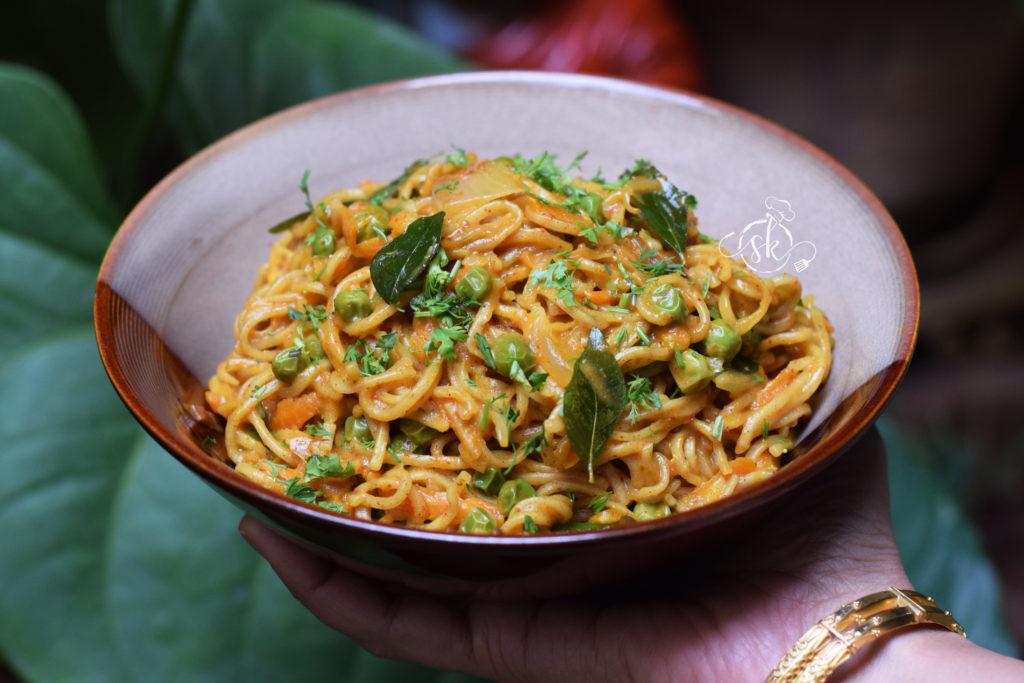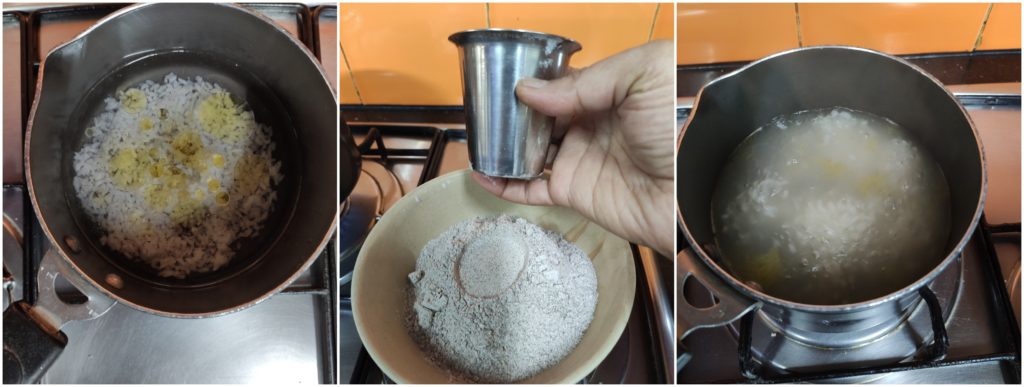As I always say, learning is an ongoing process. This particular recipe, which I learnt from my daughter. Yes! You heard it right 😀 Here, she has used coconut milk powder, which is an easy option for a hostller.
Instant noodles can be a super tasty, comforting meal by themselves if we consider replacing it with a little healthier option by opting for millet noodles and some tossed veggies. When I heard milk and the explanation of the recipe, I was a little hesitant. After tasting it, I can tell you; it was creamy and delicious. I felt the addition of curry leaves and coconut milk was a game-changer.
Here, I have used Instant Millet based noodles. One can opt for any preferred noodle and its masala for this recipe.

Ingredients:
A small pack of instant noodles – 1 ( with masala)
Onion – 1 ( slightly bigger pieces)
Garlic – ½ tsp (chopped)
Ginger – ½ tsp (chopped)
Green chilli – 1 (sliced)
Curry leaves – 2 springs
Coconut milk/powder– 1 sachet or as required
Chopped veggies – of your choice ( I used Carrot, green peas)
Turmeric – ½ tsp
Coriander powder – ½ tsp
black pepper powder – if needed ( optional)
Garam masala – ½ tsp
Sugar – to enhance the taste ( to balance)
Method:
-Take one tawa, heat a tbl spoon of oil, when it is hot, season with lots of curry leaves.
-Then, add chopped onion, green chilli, garlic, ginger fry for 2 min.
-Add turmeric, coriander powder, salt and add chopped veggies and green peas.
-Fry all these until veggies wilts. Add 2 cups of water, ready Maggi masala, and adjust the salt.
-Now, drop those noodle blocks, cook. When it is almost done, add coconut milk or coconut milk powder, add water to adjust the consistency.
-if you want some more zing, sprinkle a little pepper powder and serve.








